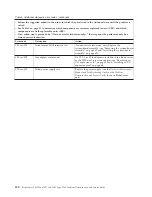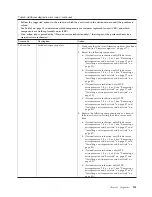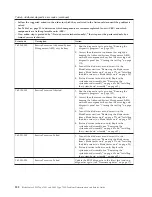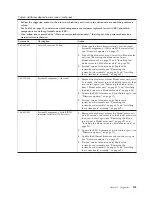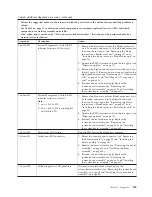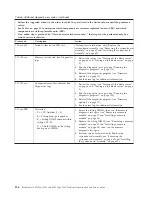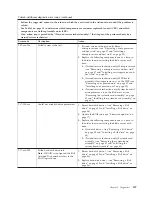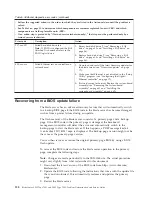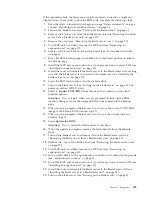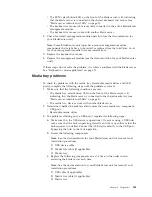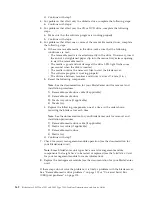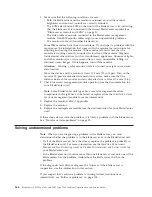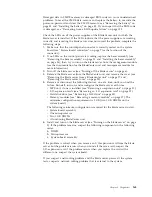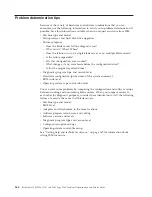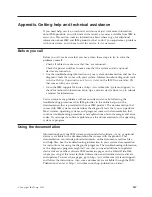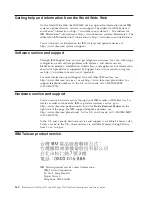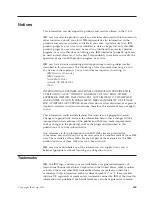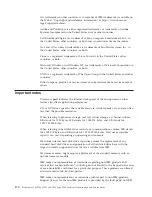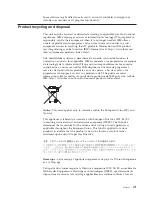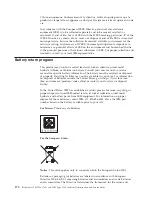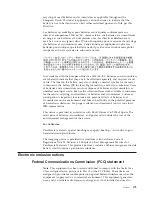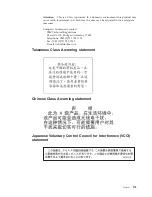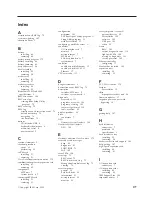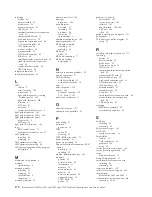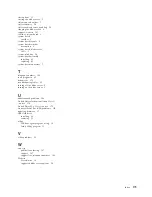
1.
Make sure that the following conditions are met:
v
Both the blade server and the monitor are turned on, and the monitor
brightness and contrast controls are correctly adjusted.
v
The KVM select button LED on the front of the blade server is lit, indicating
that the blade server is connected to the shared BladeCenter monitor (see
“Blade server controls and LEDs” on page 3).
v
The video cable is securely connected to the BladeCenter management
module. Non-IBM monitor cables might cause unpredictable problems.
v
The monitor works with another blade server.
Some IBM monitors have their own self-tests. If you suspect a problem with the
monitor, see the information that comes with the monitor for instructions for
adjusting and testing the monitor. If the monitor self-tests show that the
monitor is working correctly, consider the location of the monitor. Magnetic
fields around other devices (such as transformers, appliances, fluorescent lights,
and other monitors) can cause screen jitter or wavy, unreadable, rolling, or
distorted screen images. If this happens, turn off the monitor.
Attention:
Moving a color monitor while it is turned on might cause screen
discoloration.
Move the device and the monitor at least 305 mm (12 in.) apart. Turn on the
monitor. To prevent diskette drive read/write errors, make sure that the
distance between the monitor and any diskette drive is at least 76 mm (3 in.).
2.
Check for correct management-module operation (see the documentation for
your BladeCenter unit).
Note:
Some BladeCenter unit types have several management-module
components that might have to be tested or replaced (see the
Installation Guide
for your management module for more information).
3.
Replace the monitor cable, if applicable.
4.
Replace the monitor.
5.
Replace the management module (see the documentation for your BladeCenter
unit).
If these steps do not solve the problem, it is likely a problem with the blade server.
See “Monitor or video problems” on page 93.
Solving undetermined problems
Note:
When you are diagnosing a problem in the blade server, you must
determine whether the problem is in the blade server or in the BladeCenter unit.
v
If all of the blade servers have the same symptom, the problem is probably in
the BladeCenter unit. For more information, see the
Hardware Maintenance
Manual and Troubleshooting Guide
or
Problem Determination and Service Guide
for
your BladeCenter unit.
v
If the BladeCenter unit contains more than one blade server and only one of the
blade servers has the problem, troubleshoot the blade server that has the
problem.
If the diagnostic tests did not diagnose the failure or if the blade server is
inoperative, use the information in this section.
If you suspect that a software problem is causing failures (continuous or
intermittent), see “Software problems” on page 103.
164
BladeCenter LS22 Type 7901 and LS42 Type 7902: Problem Determination and Service Guide
Содержание LS42 - BladeCenter - 7902
Страница 1: ...BladeCenter LS22 Type 7901 and LS42 Type 7902 Problem Determination and Service Guide...
Страница 2: ......
Страница 3: ...BladeCenter LS22 Type 7901 and LS42 Type 7902 Problem Determination and Service Guide...
Страница 12: ...x BladeCenter LS22 Type 7901 and LS42 Type 7902 Problem Determination and Service Guide...
Страница 76: ...64 BladeCenter LS22 Type 7901 and LS42 Type 7902 Problem Determination and Service Guide...
Страница 192: ...180 BladeCenter LS22 Type 7901 and LS42 Type 7902 Problem Determination and Service Guide...
Страница 193: ......
Страница 194: ...Part Number 49Y0107 Printed in USA 1P P N 49Y0107...

